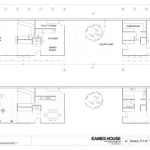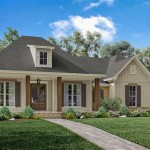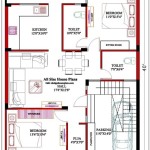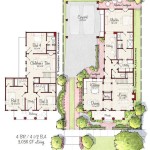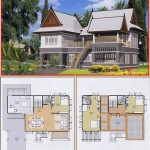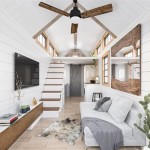Large Farmhouse Plans: Designing for Space, Comfort, and Functionality
The allure of the farmhouse style continues to captivate homeowners seeking a blend of rustic charm, spacious living, and connection with nature. Large farmhouse plans cater to those who require ample square footage, whether for accommodating large families, frequent guests, or specific lifestyle needs. These plans often incorporate elements of traditional farmhouse architecture while adapting to contemporary living preferences.
Designing a large farmhouse involves careful consideration of not only aesthetics but also functionality, flow, and energy efficiency. The size of the home necessitates strategic planning to ensure that each space is utilized effectively and contributes to the overall comfort and livability. Factors such as site orientation, interior layout, material selection, and landscaping all play crucial roles in creating a successful large farmhouse design.
Key Considerations When Choosing a Large Farmhouse Plan
Selecting the appropriate large farmhouse plan requires a thorough assessment of the individual needs and preferences of the homeowner. Several key considerations should guide the decision-making process, ensuring that the final design aligns with the desired lifestyle and budget.
1. Space Allocation and Functionality: One of the primary benefits of a large farmhouse plan is the abundance of space. However, simply having more square footage is not enough. The layout must be carefully planned to ensure that each room serves a specific purpose and flows seamlessly into the adjacent spaces. Consider how the home will be used on a daily basis and how the different areas will interact with each other. For example, a large, open-concept kitchen and living area may be ideal for entertaining and family gatherings, while a separate home office or study provides a quiet space for work or relaxation. Adequate storage space, including pantries, closets, and mudrooms, is also essential for maintaining an organized and clutter-free home.
The placement of bedrooms should also be carefully considered. Master suites are often located on the main floor for convenience and privacy, while secondary bedrooms may be situated on the upper level. Separate guest suites can provide additional privacy for visitors. Furthermore, think about the accessibility of different areas within the home, particularly for aging family members or those with mobility limitations. Features such as wider doorways, ramps, and grab bars can be incorporated into the design to enhance accessibility.
2. Architectural Style and Aesthetics: While the term "farmhouse" evokes a specific image, there is room for variation and personalization within the style. Consider the specific architectural elements that appeal to you, such as the type of roofline, the style of windows, and the exterior cladding materials. Traditional farmhouses often feature gabled roofs, dormer windows, and clapboard or shingle siding. However, modern farmhouse designs may incorporate elements of other styles, such as Craftsman or contemporary architecture. Think about the overall aesthetic you want to achieve and choose a plan that reflects your personal taste.
Exterior features such as porches, verandas, and patios are also integral to the farmhouse style, providing outdoor living spaces that connect the home to the surrounding landscape. A large front porch is a traditional farmhouse staple, offering a welcoming space for relaxing and socializing. Balconies and decks can also be incorporated into the design to take advantage of views or provide additional outdoor living areas. Landscaping plays a crucial role in enhancing the farmhouse aesthetic, with features such as gardens, orchards, and pastures adding to the rustic charm of the property.
3. Energy Efficiency and Sustainability: Building a large home can have a significant impact on energy consumption and environmental footprint. Therefore, it is important to prioritize energy efficiency and sustainability when choosing a large farmhouse plan. Consider incorporating features such as high-performance windows, insulation, and HVAC systems to reduce energy costs and improve indoor air quality. Solar panels can also be installed to generate renewable energy and further reduce the home's carbon footprint. Water conservation measures, such as low-flow fixtures and rainwater harvesting systems, can also help to minimize water usage.
Sustainable building materials, such as reclaimed wood, bamboo flooring, and recycled-content siding, can be used to reduce the environmental impact of the construction process. Furthermore, consider the long-term durability and maintenance requirements of the materials you choose. Durable, low-maintenance materials can help to reduce the need for repairs and replacements, saving you money and reducing waste over time. Site orientation is also critical for energy efficiency. Orienting the home to maximize solar gain in the winter and minimize solar heat gain in the summer can help to reduce heating and cooling costs.
Essential Features of Large Farmhouse Designs
Beyond the basic plan, certain features common in large farmhouse designs contribute significantly to their character and practicality.
1. Open Floor Plans: Open floor plans are a hallmark of modern farmhouse design, creating a sense of spaciousness and connection between different living areas. This layout is particularly well-suited for large homes, allowing for seamless flow between the kitchen, dining room, and living room. Open floor plans also facilitate social interaction and make it easier to entertain guests. However, it is important to define distinct zones within the open space to prevent it from feeling too cavernous. This can be achieved through the use of furniture arrangements, area rugs, and changes in ceiling height.
2. Large Kitchens: The kitchen is often the heart of a farmhouse, and large farmhouse plans typically feature spacious, well-equipped kitchens that are designed for both cooking and gathering. Features such as large islands, walk-in pantries, and farmhouse sinks are common. Ample counter space and storage are essential for preparing meals and storing kitchen essentials. A breakfast nook or informal dining area can provide a cozy space for casual meals, while a formal dining room can be used for more formal occasions.
3. Multiple Bedrooms and Bathrooms: Large farmhouse plans naturally accommodate multiple bedrooms and bathrooms to cater to the needs of growing families or frequent guests. The number and configuration of bedrooms and bathrooms will depend on the specific requirements of the homeowner. Master suites often include a private bathroom, walk-in closet, and sitting area. Secondary bedrooms may share a bathroom or have their own en-suite bathrooms. Guest suites can provide additional privacy for visitors. Consider the placement of bathrooms in relation to bedrooms and living areas to ensure convenience and accessibility.
4. Mudrooms and Laundry Rooms: Mudrooms and laundry rooms are essential features of any farmhouse, providing practical spaces for storing coats, shoes, and other outdoor gear, as well as washing and drying clothes. A mudroom is typically located near an entrance, providing a transition zone between the outdoors and the indoors. Features such as built-in storage, benches, and hooks can help to keep the mudroom organized. A laundry room should be equipped with a washing machine, dryer, and ironing board, as well as ample counter space and storage for laundry supplies.
Adapting Farmhouse Plans to Modern Needs
While farmhouse style evokes a sense of tradition, current builds rarely completely replicate historic designs. Modern adaptations are frequently implemented to enhance livability and meet contemporary functional needs.
1. Technology Integration: Integrating technology seamlessly into the farmhouse design is crucial for modern living. This includes incorporating smart home features such as automated lighting, temperature control, and security systems. Pre-wiring for internet and entertainment systems is also essential. Consider the placement of outlets and data ports to ensure that they are conveniently located throughout the home. A dedicated home office or media room may also be necessary for those who work from home or enjoy entertainment technology.
2. Accessibility Considerations: Designing for accessibility is becoming increasingly important, particularly for aging homeowners or those with mobility limitations. This includes incorporating features such as wider doorways, ramps, grab bars, and accessible bathrooms. Universal design principles can be applied to create a home that is both beautiful and functional for people of all abilities. Consider the placement of appliances and fixtures to ensure that they are easily accessible from a wheelchair. Single-story farmhouse plans can also be a good option for those who want to avoid stairs.
3. Outdoor Living Spaces: Embracing outdoor living is a key aspect of the farmhouse lifestyle. Large farmhouse plans often incorporate expansive porches, patios, and decks that provide ample space for relaxing, entertaining, and enjoying the natural surroundings. Outdoor kitchens, fireplaces, and seating areas can further enhance the outdoor living experience. Consider the placement of outdoor living spaces in relation to the sun and prevailing winds to maximize comfort. Landscaping can also play a crucial role in creating a beautiful and functional outdoor space.
4. Customization and Personalization: Ultimately, the perfect large farmhouse plan is one that is tailored to the specific needs and preferences of the homeowner. Don't be afraid to customize and personalize the plan to make it your own. This may involve making changes to the layout, adding or removing features, or selecting different materials and finishes. Working with an architect or designer can help you to create a truly unique farmhouse that reflects your personal style and lifestyle.

Traditional Style With 3 Bed 4 Bath 2 Car Garage Farmhouse House Plans Modern

10 Amazing Modern Farmhouse Floor Plans Farmhousefloorplan Floorplan
:max_bytes(150000):strip_icc()/SL-2001-tennessee-farmhouse-c325fe44f6f34dac8bd5862cb721b2e6.jpg?strip=all)
14 Farmhouse House Plans That Will Make Your Jaw Drop
:max_bytes(150000):strip_icc()/SL-1954-cedar-river-farmhouse-738a5f582cd94c0ba2f79bf2ef4280c9.jpg?strip=all)
14 Farmhouse House Plans That Will Make Your Jaw Drop

Modern Farmhouse Plans Traditional Floor Houseplans Com

Plan 41455 Large Farmhouse With 3 Car Garage

25 Gorgeous Farmhouse Plans For Your Dream Homestead House

Plan 51816hz Modern Farmhouse With 3 Car Front Entry Garage And Bonus Room Colonial House Plans Ranch

Farmhouse Plans Floor House The Designers

Farmhouse Blueprints House Plans Floor For Builders

